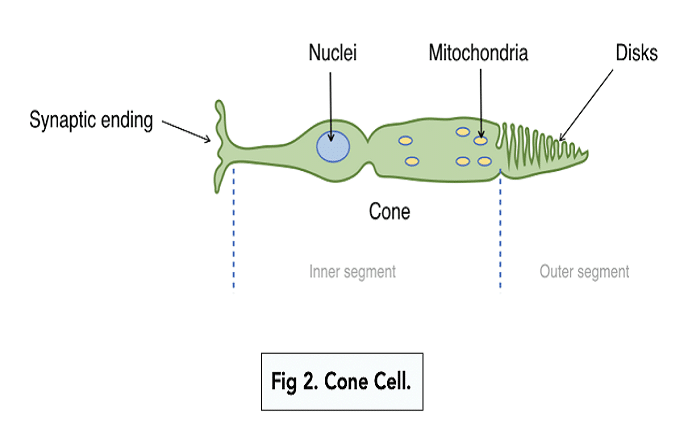Light Receptor Cell Diagram Educake: A Comprehensive Guide

The light receptor cell diagram Educake provides a clear visualization of how light receptor cells function in the human eye. These specialized cells, known as photoreceptors, play a crucial role in detecting light and converting it into signals sent to the brain. By studying the light receptor cell diagram Educake, students and educators can gain an in-depth understanding of the eye’s structure and function.
Components of the Light Receptor Cell Diagram Educake
When analyzing the light receptor cell diagram educake, it is important to recognize the key components. The two main types of light receptor cells depicted in the diagram are rods and cones. Rod cells are responsible for vision in low light conditions, while cone cells help detect color and sharp details. Each structure in the light receptor cell diagram Educake serves a unique function essential for vision.
How the Light Receptor Cell Diagram Educake Aids Learning
The light receptor cell diagram Educake is a powerful educational tool that simplifies complex biological concepts. By breaking down the anatomy of photoreceptor cells, the diagram allows students to visualize the intricate processes that occur in the retina. Educake, as an interactive learning platform, enhances comprehension by offering quizzes and explanations alongside the light receptor cell diagram.
The Function of Light Receptor Cells Explained Through the Light Receptor Cell Diagram Educake
The light receptor cell diagram Educake illustrates how photoreceptors capture light and transmit signals to the optic nerve. Rods and cones work together to provide detailed visual information. Rods are highly sensitive and detect movement in dim light, while cones provide color perception and high-resolution imagery. The light receptor cell diagram Educake effectively demonstrates these essential biological processes.
Importance of the Light Receptor Cell Diagram Educake in Vision Studies
Understanding the light receptor cell diagram educake is crucial for students studying vision and neuroscience. This diagram is widely used in biology classrooms to explain how the human eye adapts to different lighting conditions. The insights gained from the light receptor cell diagram Educake help researchers and students appreciate the complexity of the visual system and its impact on perception.
Comparing the Light Receptor Cell Diagram Educake with Other Learning Tools
The light receptor cell diagram Educake is often compared to traditional textbook illustrations and digital simulations. Unlike static images, the interactive nature of Educake provides a more engaging and immersive learning experience. The light receptor cell diagram Educake offers real-time assessments, ensuring students understand each component of photoreceptor cells in-depth.
How to Use the Light Receptor Cell Diagram Educake Effectively
To maximize learning with the light receptor cell diagram Educake, students should actively engage with the material. Reviewing the diagram alongside quizzes and practice questions reinforces knowledge retention. Teachers can also incorporate the light receptor cell diagram Educake into lesson plans, allowing students to visualize photoreceptor function dynamically. This approach makes studying vision and light receptors more interactive and enjoyable.
Conclusion
The light receptor cell diagram Educake is a valuable educational tool that simplifies the understanding of photoreceptor cells. With its interactive features and detailed explanations, Educake enhances student engagement and comprehension of vision science. By leveraging the light receptor cell diagram Educake, learners can grasp the intricate functions of rods and cones and appreciate the complexity of human vision.
FAQs
1. What is the light receptor cell diagram Educake?
The light receptor cell diagram Educake is an interactive educational tool that illustrates the structure and function of photoreceptor cells.
2. How does the light receptor cell diagram Educake help in learning?
It provides a visual representation of rod and cone cells, enhancing student comprehension through interactive quizzes and explanations.
3. What are the key components of the light receptor cell diagram Educake?
The diagram includes rods and cones, which are responsible for detecting light, color, and movement in the human eye.
4. Can the light receptor cell diagram Educake be used for self-study?
Yes, students can use the diagram for independent learning by engaging with Educake’s quizzes and practice materials.
5. Why is the light receptor cell diagram Educake important in vision studies?
It simplifies complex concepts, making it easier for students to understand how the human eye processes light and color.





